Jo Kessel heads to deepest, darkest Peru for a thrilling mother and son adventure of a lifetime encompassing tropical treats in the rainforest and incredible Inca ruins.
My 13-year-old son Gabriel and I are sitting together on a motorboat cruising along a tributary of the Amazon in Peru. The boat is so low to its taupe-coloured waters that if it weren’t for the piranhas lurking beneath we would drape our arms in. We’re here enjoying this surreal experience because Gabriel has started craving more adventure than a fortnight on the Med. That and a relatively new, direct British Airways route from London to Lima sealed the deal.
After an overnight stay in Lima followed by a short domestic flight to Puerto Maldonado – gateway to the southern Peruvian jungle – we are here on the river which carves a 4,500-mile trail from Peru’s Andes, through dense tropical rainforest, towards the Atlantic.
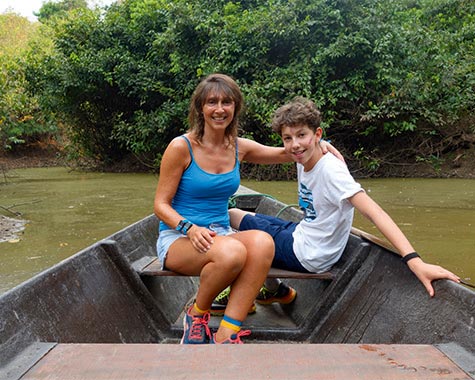
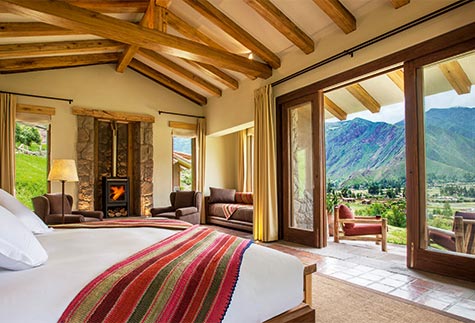
We’re en route to Inkaterra Reserva Amazonica, a luxury boutique hotel set in the heart of the jungle with 35 thatched-roof cabanas (their walls are made from surrounding trees) that are camouflaged and hard to spot from the boat. Once there we’re told our visit is carbon neutral (electricity is low-impact and limited in the evenings).
We plan our itinerary for the next 48 hours, choosing from the list of excursions included in the price, led by its team of guides – jungle treks and river trips, all offering flora and fauna-viewing opportunities.
After lunch in the main lodge (meals are included) we find our cabana overlooking the river. Gabriel lowers himself into a hammock, lazing as he watches brown-furred agouti (they resemble giant guinea pigs) scuttle across the jungle floor while tropical butterflies flutter past.
Our first adventure is a twilight river excursion. Boarding a motorboat we’re soon shrouded in an eerie blackness – the only light is a dazzle of constellations in the inky sky. The driver uses a heavy-duty torch to guide his path and pick out wildlife. First a posse of baby white spectacled caimans, whose eyes glare in the dark; next the world’s biggest rodent, a capybara. The driver cuts the engine. ‘Let’s meditate for two minutes,’ he says. The noise of wildlife communicating is deafening – a multi-layered nocturnal symphony punctuated by hooting.
The next morning we wake to a similar, thrilling sound and a scratching noise underneath our cabin – an agouti, perhaps? Red flares through a window – a fiery blood orange sun rising above the Amazon.
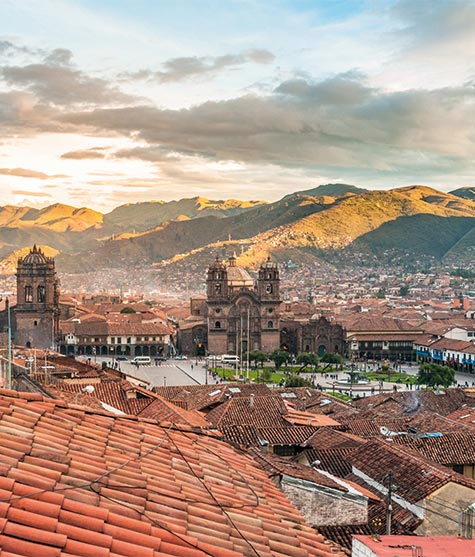
A view of Cuzco, high in the Peruvian Andes
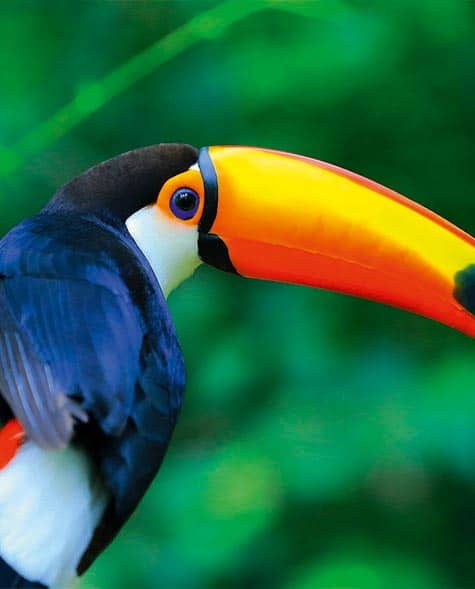
Colorful Cute Toucan tropical bird, Brazilian Amazon
There’s no phone network let alone Wi-Fi, and after breakfasting on freshly-baked breads and coffee we’re taken to a 30-metre high walkway up in the rainforest canopy. We see monkeys bouncing from branch to branch, a wasps’ nest the size of a punch bag and birds vividly coloured birds. Our guide’s illustrated book means we can match sightings to pictures.
Excursions are fun and intimate (no more than eight guests) with time in-between to chill out or enjoy a meal. Cuisine is tasty and inventive, using local, organic ingredients such as quinoa, used in salads, pancakes and breads. My favourite is paiche, a large white-meat river fish. It comes served in a palm leaf or in a spicy stew similar to bouillabaisse – only better.
The next two days are thrilling. We cross the jungle for miles on foot and by boat, spotting different monkey species, caiman, tarantulas, toxic toads, giant turtles, otters, cormorants. We eat star fruit and cashew nut fruit fresh from trees. Our guide insists termites are excellent protein so Gabriel tries one. “Tastes like bark and mud.”
Inkaterra has five luxury hotels across Peru and our third night is spent in their smaller jungle hotel, the Hacienda Concepcion, a 15-minute boat-ride away. We go piranha-fishing using primitive rods and beef for bait. Within minutes (beginner’s luck) we’ve hooked one and examine its scarily sharp teeth before throwing it back in.
After three days we head towards another Peruvian treasure: Machu Picchu. To reach this ancient Incan citadel high in the Andes requires a 40-minute flight to Cusco, whose 3,400m elevation leaves us light-headed and breathless.
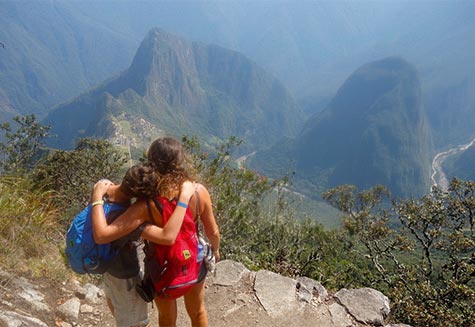
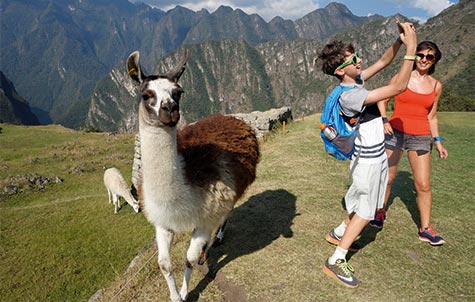
Our tour operator Aracari proves our saviour providing us with coca tea (a local remedy for altitude sickness) in the car ride to our hotel, the Hacienda Urubamba, halfway between Cusco and Machu Picchu in the Sacred Valley, where we’re surrounded by dramatic, arid, Andean peaks.
It’s the perfect place to acclimatise and the next morning, when our Aracari guide Fredy arrives, we’re raring to go. It’s possible to do a three-day hike from here to Machu Picchu along the notorious 26-mile-long Inca trail, but we take a scenic train journey through the Andes instead.
Then, after a short bus ride, we’re staring at this 15th-century marvel.
It’s so epic it’s hard to believe we’re here. We drink in the mountains circling us, their summits all equally high at 2,400m and carpeted with cloud forest. No surprise it was voted one of the new seven wonders of the world in 2007.
How did the Incas clear the vegetation on these sheer slopes let alone build a city? Fredy shows us how they constructed walls without cement, and how their architecture and trademark terraces were in harmony with the mountains.
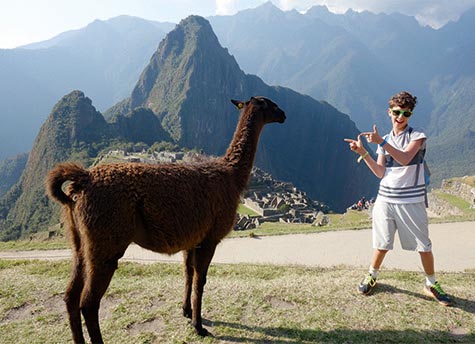
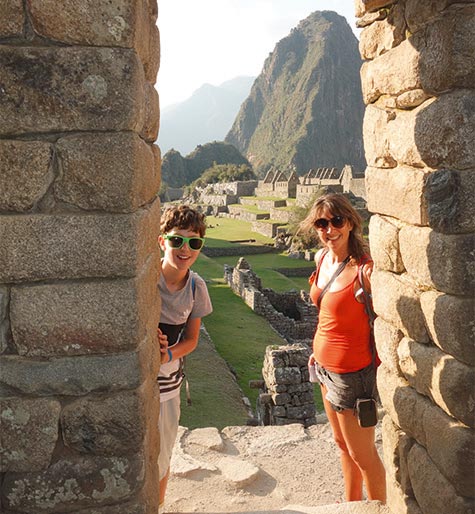
Machu Picchu is known as the ‘lost Incan city’ because the Spanish (who conquered the Incans) knew it existed, but never found it. Gabriel’s fascinated not just by the history, but by llamas roaming the ruins, extremely uncooperative when he tries taking a selfie with them.
Our final day is equally exhilarating and memorable – a vertiginous hike up Machu Picchu mountain that takes two lung-busting hours to summit. Afterwards we barter for alpaca socks and gloves at a local market before returning to our base, the Machu Picchu Pueblo Hotel, to visit its tea plantation and bear sanctuary. The Andean spectacled bear is endangered and the hotel rescues neglected animals to release back into the wild.
For our last supper Gabriel tries cuy – guinea pig – and declares it tastes like duck. I drink a Pisco sour, Peru’s national drink and we toast our amazing Amazonian adventure, vowing to return and hike the Inca Trail.
How to get there
British Airways flies direct from Gatwick to Lima twice a week from £516 return. The flight is 12-and-a-half hours but there’s lots of onboard entertainment to occupy the children. Tetanus, typhoid and hepatitis jabs are recommended, as are yellow fever and anti-malarial pills for the jungle.
Getting around and where to stay
Peru luxury travel specialist Aracari organises tailor-made trips. A seven-day trip to Peru including stays at the JW Marriott Lima, Inkaterra Reserva Amazonica, Inkaterra Hacienda Concepcion, Inkaterra Hacienda Urubamba and Inkaterra Machu Picchu Pueblo Hotel costs £3,986 for one adult and one child under 11. Includes ground transfers, trains, guides, activities, a private guided tour of Machu Picchu and some meals. Domestic flights for the whole trip from £526 per person.